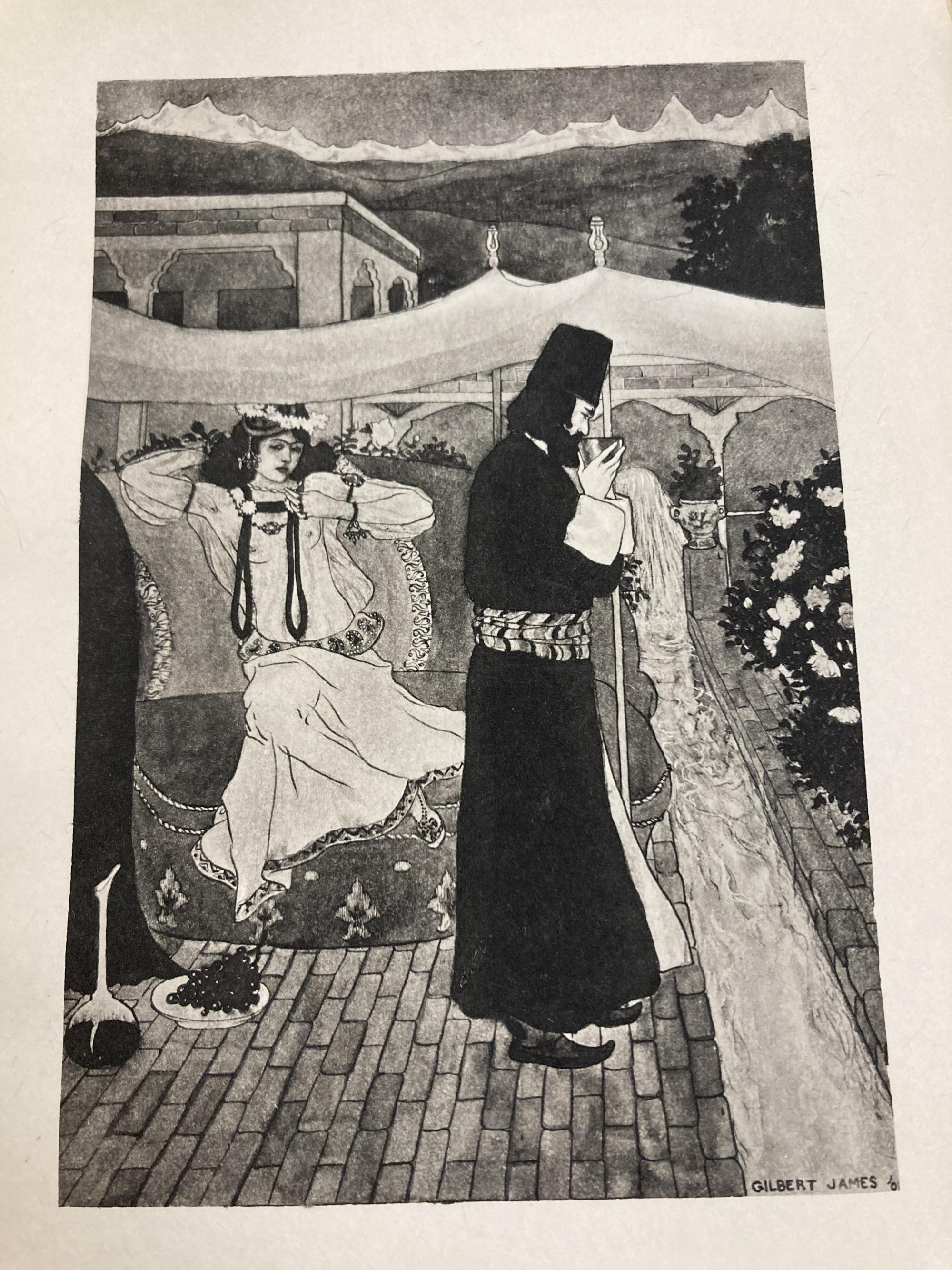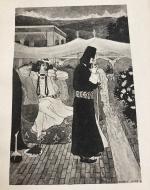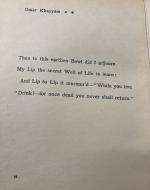Created by Sukhjot Sal on Thu, 05/18/2023 - 02:44
Description:
In the 1905 edition of Edward Fitzgerald's translation of Omar Khayyám's Rubáiyát, Stanza 35 (XXXV) works with Gilbert James's photogravure on the adjoining page to emphasize Khayyám's commentary in the whole poem on mortality and how important it is to be grateful and mindful of the things we have available to us during our finite time on earth.
Similar to other stanzas, quatrain 35 continues to refer to the "earthen Bowl" as a source of wisdom, something to look to for advice. In the corresponding photogravure, the man in black is facing flowers, with his lips to a chalice of some kind. It can be inferred that this chalice is supposed to represent the earthen Bowl, or "secret Well of Life". Drinking wine acts as a symbol of gaining knowledge about life, as Fitzgerald translates, “Then to this earthen Bowl did I adjourn My Lip the secret Well of Life to learn”. The illustration confirms this line, showing the man putting his lips to the cup in a way that appears to be thoughtful, eyebrows lowered, and gaze low. Wearing a long dark robe, he is facing away from a woman lying leisurely on a couch outside.
The stanza continues, saying “And Lip to Lip it murmur’d”, proving that once he is about to drink from life, he can begin to learn. This relationship between the speaker in the poem and the bowl is essential. The speaker represents human body, the earth, while the bowl seems to represent something beyond, the Well of Life, which is perhaps the cavern we hear about earlier.
The final part of the stanza is the advice given from the Bowl — “While you live Drink! — for once dead you shall never return.” This stanza is representative of Khayyám's general perspective in the poem, that death is permanent and the final destination, and because of this, it’s important to find solace in human joys and appreciate them while they exist.
The illustration supports this overall message. The woman behind the man with the cup is draped in fine clothing, jewelry, and flowers in her hair, and she’s lying back on an embroidered couch with a pillow. A stemmed glass of wine and grapes are at their feet, and the environment and setting is notable. There is a relaxation in her posture, the way her legs are angled. There are flowers on the right, big tents and buildings with columns in the background, and in the far back, mountains and sky. As your eyes travel from the foreground to the background, you can fully see the scope of this finite life, all of the different things earth and life have to offer. To read this stanza while examining the illustration is to more fully understand what Khayyám was trying to communicate in the poem.



